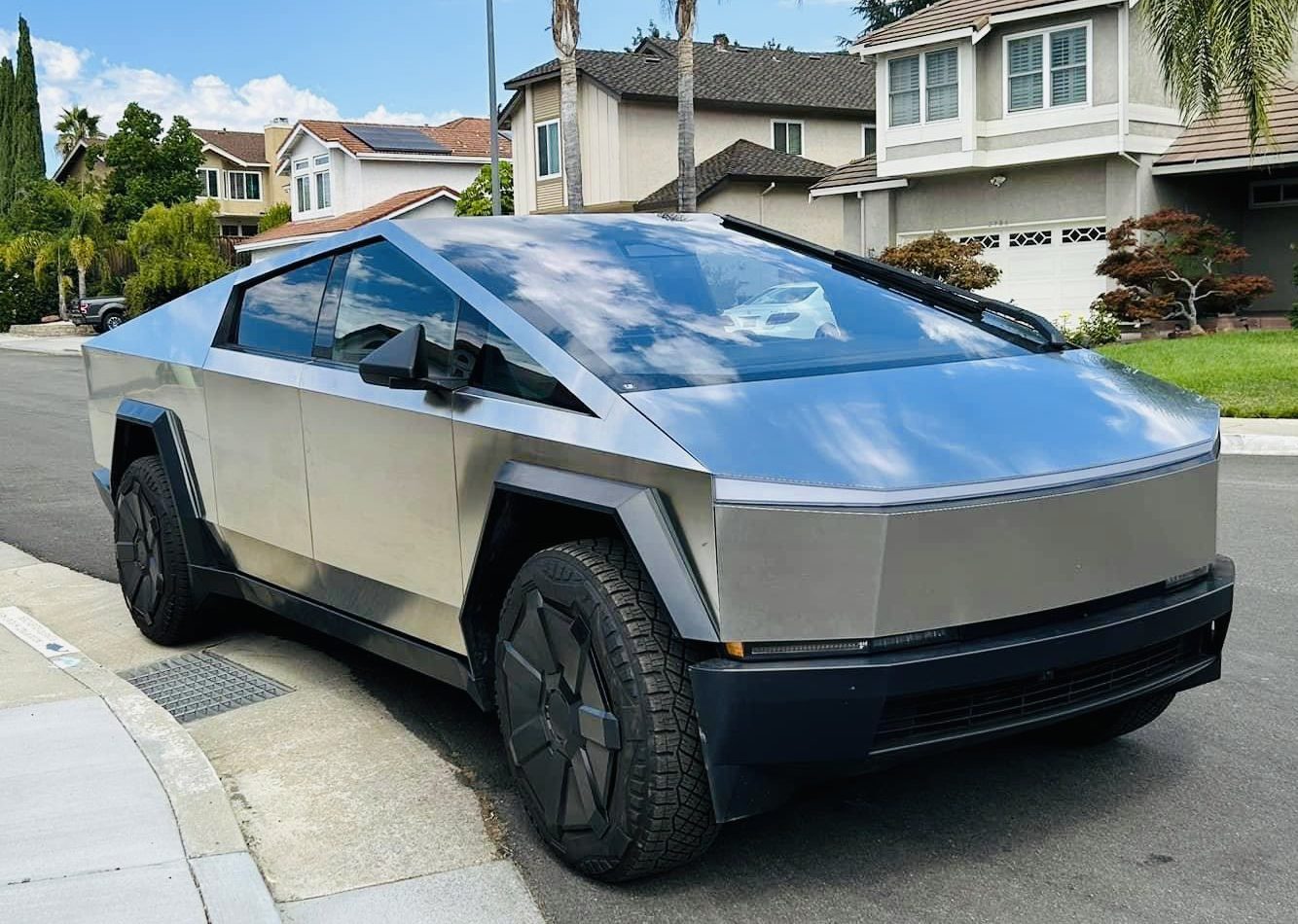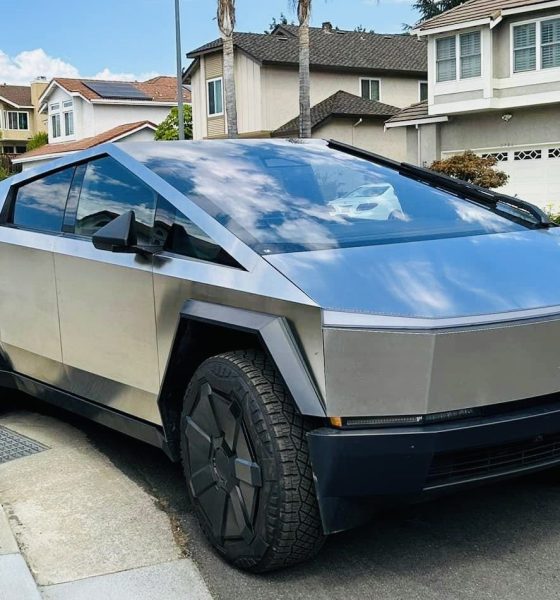

News
What Tesla Cybertruck pricing could look like based on inflation
Tesla Cybertruck deliveries are set to begin in roughly one month on November 30 at Gigafactory Texas. Although Tesla confirmed this significant detail last week during its Quarterly Earnings Call, the automaker left out a few important details, including available trim levels and pricing.
While NHTSA documents confirmed trim levels just a few days after Earnings last week, pricing still remains up in the air, and there could be several reasons for this.
One could be the uncertainty of market conditions, as Tesla has routinely changed prices in 2023, and announcing a specific cost of each trim now could change by the time deliveries roll around. Another reason is that Tesla could simply be undecided or not ready to announce a price.
This vehicle is so anticipated that it could likely make early reservation holders pay a premium. With uncertainty looming in macroeconomic conditions, the company could try and make the most of the early deliveries.
While the Semi was produced and delivered to its first buyers without a price, we don’t expect Tesla to do the same with the Cybertruck. The Semi is an entirely different vehicle class and not something that will be driven on roads by the everyday person.
Even though pricing has remained relatively out of the public realm since Tesla delivered the first Semi units to PepsiCo. last year, there is no way the company would or could do this with the Cybertruck, a vehicle that has amassed over 1 million orders, CEO Elon Musk said on the Call last week.
Nevertheless, there is data out there that could point us in the right direction, giving us a rough estimate of what the Cybertruck could cost based on the price of full-size pickups in 2019 when the vehicle and pricing for the trims available at that time were announced.
Using data from Kelley Blue Book, the cost of the Cybertruck would have theoretically increased by 30.7 percent. In November 2019, a full-size pickup’s average price was $51,140, not including applied consumer incentives. Over the next four years, leading up to 2023, the cost of pickups has increased every year, except for this year, as the average cost of a new truck decreased by about $1,500 from 2022.
The most recent KBB data available is for September 2023, when Full-Size Pickups landed at an average transaction price of $66,841.
When Tesla announced the Cybertruck in 2019, there were three trims: Single, Dual, and Tri-Motor. They were priced at $39,990, $49,990, and $69,990, respectively. With only the Dual and Tri-Motor configurations still standing, we can calculate what the Cybertruck would cost today in a perfect world.
With the 30.7 percent increase in new, full-size pickup prices since 2019, the Cybertruck would, in a perfect world, cost:
- Dual Motor – from $49,990 in 2019 to – $65,336.93, an increase of $15,346.93.
- Tri Motor – from $69,990 in 2019 to – $91,476.93, an increase of $21,486.93.
Of course, this is in no way a confirmation of Tesla’s pricing, as it could have many other things factored into the cost, especially as the vehicle has changed in sizing and design over the past four years.
The price of the Cybertruck has been highly speculated since Tesla removed pricing from the Online Design Studio a few years ago, as it was still mulling over potential configurations.
It has not stopped people from posting things on social media stating they have been contacted by Tesla and given a price for their Cybertruck reservations, either.
Hmm… is the Tri-Motor Performance Cybertruck pricing set? $98,990 before FSD and the usual taxes & delivery fees… wow that’s a lot of coin. pic.twitter.com/uQyvH0NxR9
— ?TACOS +⚡️TESLAS (@TacosandTeslas) October 24, 2023
Tesla will likely start contacting reservation holders soon to set up their delivery, as the first units will be handed over at a delivery event at Gigafactory Texas.
How much do you think the Cybertruck will cost? Let me know your estimates! Email me at joey@teslarati.com. You can also reach me on Twitter @KlenderJoey, or if you have news tips, you can email us at tips@teslarati.com.

Elon Musk
Elon Musk’s xAI closes upsized $20B Series E funding round
xAI announced the investment round in a post on its official website.

xAI has closed an upsized $20 billion Series E funding round, exceeding the initial $15 billion target to fuel rapid infrastructure scaling and AI product development.
xAI announced the investment round in a post on its official website.
A $20 billion Series E round
As noted by the artificial intelligence startup in its post, the Series E funding round attracted a diverse group of investors, including Valor Equity Partners, Stepstone Group, Fidelity Management & Research Company, Qatar Investment Authority, MGX, and Baron Capital Group, among others.
Strategic partners NVIDIA and Cisco Investments also continued support for building the world’s largest GPU clusters.
As xAI stated, “This financing will accelerate our world-leading infrastructure buildout, enable the rapid development and deployment of transformative AI products reaching billions of users, and fuel groundbreaking research advancing xAI’s core mission: Understanding the Universe.”
xAI’s core mission
Th Series E funding builds on xAI’s previous rounds, powering Grok advancements and massive compute expansions like the Memphis supercluster. The upsized demand reflects growing recognition of xAI’s potential in frontier AI.
xAI also highlighted several of its breakthroughs in 2025, from the buildout of Colossus I and II, which ended with over 1 million H100 GPU equivalents, and the rollout of the Grok 4 Series, Grok Voice, and Grok Imagine, among others. The company also confirmed that work is already underway to train the flagship large language model’s next iteration, Grok 5.
“Looking ahead, Grok 5 is currently in training, and we are focused on launching innovative new consumer and enterprise products that harness the power of Grok, Colossus, and 𝕏 to transform how we live, work, and play,” xAI wrote.
Investor's Corner
Tesla gets price target bump, citing growing lead in self-driving

Tesla (NASDAQ: TSLA) stock received a price target update from Pierre Ferragu of Wall Street firm New Street Research, citing the company’s growing lead in self-driving and autonomy.
On Tuesday, Ferragu bumped his price target from $520 to $600, stating that the consensus from the Consumer Electronics Show in Las Vegas was that Tesla’s lead in autonomy has been sustained, is growing, and sits at a multiple-year lead over its competitors.
CES 2026 validates Tesla’s FSD strategy, but there’s a big lag for rivals: analyst
“The signal from Vegas is loud and clear,” the analyst writes. “The industry isn’t catching up to Tesla; it is actively validating Tesla’s strategy…just with a 12-year lag.”
The note shows that the company’s prowess in vehicle autonomy is being solidified by lagging competitors that claim to have the best method. The only problem is that Tesla’s Vision-based approach, which it adopted back in 2022 with the Model 3 and Model Y initially, has been proven to be more effective than competitors’ approach, which utilizes other technology, such as LiDAR and sensors.
Currently, Tesla shares are sitting at around $433, as the company’s stock price closed at $432.96 on Tuesday afternoon.
Ferragu’s consensus on Tesla shares echoes that of other Wall Street analysts who are bullish on the company’s stock and position within the AI, autonomy, and robotics sector.
Dan Ives of Wedbush wrote in a note in mid-December that he anticipates Tesla having a massive 2026, and could reach a $3 trillion valuation this year, especially with the “AI chapter” taking hold of the narrative at the company.
Ives also said that the big step in the right direction for Tesla will be initiating production of the Cybercab, as well as expanding on the Robotaxi program through the next 12 months:
“…as full-scale volume production begins with the autonomous and robotics roadmap…The company has started to test the all-important Cybercab in Austin over the past few weeks, which is an incremental step towards launching in 2026 with important volume production of Cybercabs starting in April/May, which remains the golden goose in unlocking TSLA’s AI valuation.”
Tesla analyst breaks down delivery report: ‘A step in the right direction’
Tesla has transitioned from an automaker to a full-fledged AI company, and its Robotaxi and Cybercab programs, fueled by the Full Self-Driving suite, are leading the charge moving forward. In 2026, there are major goals the company has outlined. The first is removing Safety Drivers from vehicles in Austin, Texas, one of the areas where it operates a ride-hailing service within the U.S.
Ultimately, Tesla will aim to launch a Level 5 autonomy suite to the public in the coming years.
Elon Musk
Elon Musk’s Biggest Revelations on AI, Robots, and the Future of Work from the Moonshots Podcast

Elon Musk’s appearance on the Moonshots with Peter Diamandis podcast was packed with bold predictions, candid admissions, and surprising tech insights. The nearly three-hour conversation covered everything from artificial intelligence to humanoid robots, geopolitics, and the future of work. Here are the top 10 most intriguing takeaways:
-
Aggressive AGI Timeline Predictions
Musk offered a detailed view on when artificial general intelligence (AGI) could emerge, suggesting it may arrive sooner than many expect, emphasizing both transformative potential and risks.
-
U.S. vs. China in the AI Race
He discussed the strategic competition between the United States and China over AI development, noting that geopolitical dynamics will shape how and who leads in the next decades.
-
Future of Job Markets
Musk touched on how AI and automation could reshape employment, predicting massive boosts in productivity alongside potential disruptions in traditional work structures.
-
Clean Energy Transition
A recurring theme was the role of clean energy in future economies, with Musk reiterating the importance of scaling sustainable power generation and storage.
-
Humanoid Robots Are Coming
On the podcast, Musk elaborated on Tesla’s work on humanoid robots, hinting at timelines and applications that go beyond factories to general-purpose assistance.
-
Tesla Roadster “Last Human-Driven Car”
Outside the core discussion topics, Musk teased features of the upcoming Tesla Roadster — calling it “the best of the last of the human-driven cars” and suggesting safety won’t be its main selling point.
-
The Role of AI in Clean Energy and Robotics
Linking AI to both energy optimization and robotics, Musk explained how smarter systems could accelerate decarbonization and task automation across industries.
-
U.S. Innovation Leadership
Musk argued that maintaining American leadership in key tech sectors like AI, space, and robotics should be a national priority, with thoughtful policy and investment.
-
Job Creation vs. Job Elimination
While acknowledging automation’s disruptive effects, he also outlined scenarios where new industries and opportunities could emerge, particularly in AI, space, and advanced manufacturing.
-
Long-Term Vision for Humanity
Throughout the conversation, Musk revisited his long-term philosophical views — including a belief in humanity’s responsibility to become a multi-planetary and technologically empowered species.
Whether you agree with Musk’s optimism or not, the podcast offers a window into the thinking of one of the most influential figures in tech today, in and why his visions continue to spark debate and inspiration.








